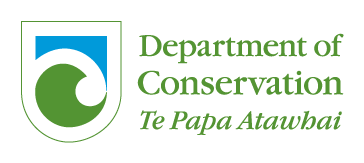
Credit: Unsplash
July 19, 2022
| Data | Purpose | Source | Latest data | Slide |
|---|---|---|---|---|
| Daily border crossings | Based solely on border crossings into and out of New Zealand, these data do not incorporate arrival card information so no breakdown of traveller type | StatsNZ | 11 July 2022 | 1. Return of Australian and US flight routes boosts arrivals |
| 2. Queenstown Airport leading all airports in recovery to 2019 levels | ||||
| Weekly visitor arrivals | Short-term overseas visitor data from arrival card information | StatsNZ | 26 June 2022 | 3. Weekly holiday visitor arrivals nearly double since two weeks ago |
| 4. The increase in weekly visitor arrivals is mostly due to an increase in Australian visitors | ||||
| Weekly resident arrivals | Short-term overseas resident data from arrival card information | StatsNZ | 26 June 2022 | 5. Since April, most resident arrivals were away for two weeks or less |
| Consumer spend data | Uses electronic card data as indicator of change in expenditure patterns in the economy | MBIE | 26 June 2022 | 6. Australian card activity remained steady through July |
| 7. Change in spend in major regions reflects the nationwide trend | ||||
| 8. The reopening of Queenstown Airport continues to boost recovery in South Island destinations |
Overall border arrivals from Australia totalled 43,500 in the latest week-ended 11 July 2022. This is a 23% increase when compared with two weeks ago (35,400) but still down 38% compared with the same week in 2019.
The increase has been helped by the return of Air NZ direct flights to Adelaide, Hobart and the Sunshine Coast in early July.
Arrivals from the United States have increased almost 50% in the last two weeks to 2,900. A big driver of this is the return of flights to Honolulu from 3 July.
As the winter peak season continues, weekly border arrivals in Queenstown are now only 27% down on 2019 levels, welcoming 7,800 arrivals in the latest week-ended 11 July. This up over 50% from two weeks ago (5,000).
In the same period, Auckland Airport welcomed 46,100 weekly arrivals. While this is up by 7,500 compared with the two weeks ago (38,600), the decline in arrivals on 2019 levels did not change (down 52%). This is due to seasonal increases in arrivals to Auckland in the baseline 2019 levels.
In the latest week-ended 26 June 2022, 24,300 international visitors arrived in New Zealand. This figure is up 38% from two weeks ago (17,500).
While this figure was down 58% on pre-COVID 2019 levels, it was up 56% on 2021 levels when the border was only open to Australia.
In that latest week, 7,000 visitors (29%) were here for a holiday. This figure is almost double the 3,800 visitors seen two weeks ago (up 84%). However, this proportion is still down on the same week in 2019, when 46% arrived for a holiday.
In the week-ended 26 June 2022, 19,000 arrivals came from Australia – 78% of all international visitors. This figure was up 6,500 from two weeks ago (12,000).
Overall visitor arrivals were up 6,900 over this same period. Thus, the overall increase in visitor arrivals can be attributed mostly due to an increase in Australian visitor arrivals.
This (19,000) figure is up 33% on 2021 levels but remains down 37% on 2019 levels.
In the latest week-ended 26 June, 23,670 NZ resident arrivals arrived back in Aotearoa New Zealand. This figure has hovered around the 20,000 to 25,000 mark since the border reopened in April 2022.
Since April, the length of absence from New Zealand for most resident arrivals was two weeks or less (58% in the latest week).
Throughout the last two weeks ending 10 July 2022, the change in Australian electronic card transaction (ECT) spend hovered between 20% and 30% on 2019 levels. This trend is similar to what was seen throughout June.
As card spend increased the same time in 2019 with the winter peak season, this plateau indicates that card spend is rising similarly to 2019. (Confidentiality considerations prevents us from reporting the absolute values of consumer spend.)
The three major urban regions: Wellington, Auckland, and Canterbury, all saw Australian ECT spend recover to levels similar to the nationwide trend.
In the week-ended 10 July 2022, these regions were down 19%, 22%, and 29% (respectively) on 2019 levels, while nationwide spend was down 26%.
Change in Australian spend in Kaikōura District on 2019 levels recovered to positive levels at the beginning of July. However, this rate fell to 32% in the week-ended 10 July.
In the latest week-ended 10 July, Australian spend in Queenstown-Lakes District was down 31%. This figure is a modest improvement from the 32% to 45% decline the district saw throughout June.
Australian spend in Southland and Westland District slumped in July, down 50% and 55% respectively in the latest week. These two districts experienced the steepest declines on 2019 levels of all territorial authorities.

